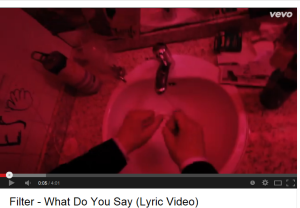These are some useful tips that we have found online after recieveing feedback indicating research into lighting options was required. We are definitley going to use some of the tips such as changing the shutter speed and zooming techniques.
1. Add Light If You Can
Even if you’re in a hurry, you can take a few minutes to add more light.
A convenient solution is to use an on camera video light. This is a light you mount to your camera that shines light on the subject. The video light I use is a Micro Pro LED light from Litepanels (highly recommended, by the way).
You have other possible ways to add light too. You can turn on lamps or overhead lights. You can use a reflector panel or a mirror to bounce light into the area that needs more light. Of course, a smart thing is to have a variety of lights that you bring with you. A portable lighting kit is a great investment.
Nothing adds light to a situation like a light.
2. Use the Biggest Aperture Your Video Camera Allows
Sometimes the aperture is called an iris, or f-stop. People use the terms interchangeably.
If your video camera has an f-stop setting, use the lowest number you can. An f-stop of 2 is good. An f-stop of 1.4 is better. The lower the f-stop number, the bigger the aperture. This wide open aperture lets more light into your camera, so you get a brighter image.
If you’re using a video camera that has a zoom lens, be aware that they frequently don’t have a constant aperture as you zoom. As you telephoto (zoom in), many times the aperture will shrink and reduce the light that enters your camera, darkening your image.
The solution is to keep the zoom lens at a wide angle so your aperture can stay wide open. If you need to get closer to your subject, try “zooming with your feet” and walk closer to the subject.
3. Slow Down Your Shutter Speed to Brighten Your Footage
Many video cameras allow you to control the shutter speed. You can use this feature to slow down the shutter speed, meaning that the shutter is “open” longer, which allows more light into the camera.
Normally when I’m shooting video, I use a shutter speed of 1/60th of a second. However, if I’m shooting video in low light, I might change the shutter speed to 1/30th of a second. This means the shutter is open twice as long, which doubles the amount of light that gets into the video camera. This makes a big impact on the brightness of the video image.
The potential downside of reducing the shutter speed is that you get more motion blur. That can be a legitimate problem, but I find that using a shutter speed of 1/30th of a second works okay for normal human motion.
4. Reduce the Frame Rate in Your Video Camera to Let More Light In
Not all video cameras can do this, but now that many are tapeless, they allow you to adjust the frame rate of your video. In fact, many video cameras try to emulate the look of film by including an option to shoot at 24 frames per second.
In a low light situation, you can change your frame rate to 24 frames per second, instead of using the common rate of 30 frames per second. If you turn off the shutter (or adjust it accordingly), this allows you to capture the frame for 1/24th of a second instead of 1/30th of a second. The slower speed allows more light into the camera, brightening your image. It’s a small increase, but it’s still an increase in light.
If your video camera allows you to adjust the frame rate even lower, you might consider shooting at 12 frames per second, or even 6 frames per second, leaving the shutter off. This wouldn’t work if you’re shooting a talking head or normal human motion, but if you’re shooting video of a landscape, a cityscape, or something that stays fairly still (building, statue, tree), you might want to consider a low frame rate with a slow shutter speed. This will significantly brighten your image.
5. Increase Your Video Camera Gain
Sometimes the video camera gain is called “sensitivity” or “ISO”. It depends on the manufacturer and model.
Only do this as a last resort. Increasing the gain has a bad effect on your image. It adds noise — little dancing flecks (frequently magenta, sometimes blue) in the shadows of your image. This noise is distracting.
Most people think that noise looks bad. You should try to avoid it.
Rule of Thumb: Only increase your video camera gain AFTER you’ve tried the other strategies, because this method does the most damage to your image.
And when you do increase it, try making small adjustments first.
6. Reduce the Video Noise in Post with Filters and Plugins
If you end up increasing your gain, then you’ll likely have unwanted video noise in your footage.
You might be able to repair the footage a little (sometimes a lot) using a filter or a plugin. You can purchase a noise reduction plugin for common editing software like Final Cut Pro or Adobe Premier Pro. When you run this plugin on your footage, you’ll likely see some improvements.
That said, the results won’t be as good as if you had captured noise-free video footage originally.
7. Use a Digital SLR Camera to Shoot Video in Low Light
Currently, a digital SLR camera is a great option for shooting video in low light. In fact, I think they’re amazing in low light. Why do they perform so well?
- You can use different lenses with wide open apertures.
- You can control the shutter speed.
- You can control the frame rate.
- You can increase the sensitivity a lot more without adding as much noise as regular video cameras.




